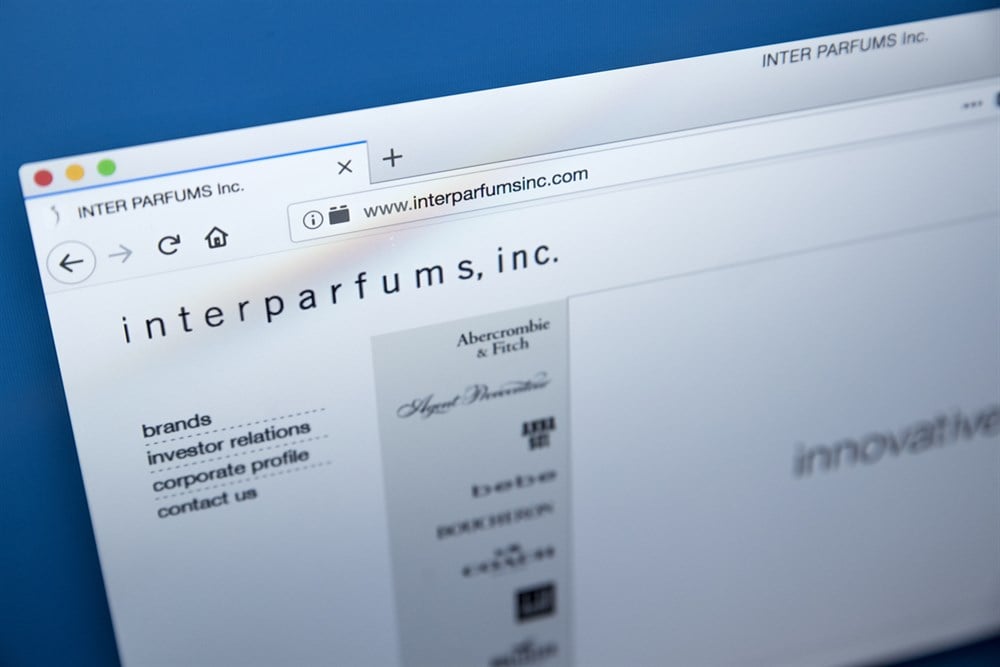 Since Inter Parfums, Inc. (NASDAQ: IPAR) commemorated its 35th anniversary by ringing the Nasdaq closing bell on February 13th, its stock is up more than 25%. And while some say the ceremony is a self-fulfilled blessing, the reality is Inter Parfum shares have been trending sharply higher since last summer.
Since Inter Parfums, Inc. (NASDAQ: IPAR) commemorated its 35th anniversary by ringing the Nasdaq closing bell on February 13th, its stock is up more than 25%. And while some say the ceremony is a self-fulfilled blessing, the reality is Inter Parfum shares have been trending sharply higher since last summer.
Perfumes and cosmetics continue to be one of the hottest areas to invest in. While most industries have been slowed by inflation and rising interest rates, the beauty industry is still seeing strong demand. Whether they are back at the workplace, resuming social activities or more focused on self-image and mental health, consumers keep spending on fragrances.
As a top player in the fragrance market, New York City-based Inter Parfums is smelling profits. The company is the exclusive global licensee for over 20 prestige brands, including lead dogs Coach, Jimmy Choo and Montblanc. It is coming off a milestone year in which sales topped $1 billion — and showing no signs of slowing down.
Last week, management announced preliminary second-quarter sales ahead of its August 9th report. Sales rose 26% year-over-year to a record $309 million, led by 42% growth in U.S. product sales. Guess brand fragrances like the newly launched Seductive Blue and Uomo Acqua continued to be a bright spot.
CFO Michel Atwood provided updated full-year sales guidance of $1.3 billion, marking the second time that 2023 guidance has been raised. Chances are there will be at least a third time. Inter Parfums recently added Italian fragrance maker Roberto Cavalli to its lineup, and the products won’t ship until November/December 2023. Anticipated sales from the newly acquired brand have yet to be included in the guidance.
What Are Inter Parfums’ Growth Drivers?
In the near term, Inter Parfums will look to the holiday shopping season to boost second-half results. Expecting resilient consumer demand, the company will soon launch gift sets in the U.S. with an emphasis on the Donna Karan, DKNY, Ferragamo and Guess brands. U.S.-based products account for around one-third of total sales, with the remainder coming from European-based products. So unlike most U.S. consumer staples companies, Inter Parfums has the most room for growth in its domestic market.
And unlike most beauty industry players, China hasn’t been much of a problem. While Estee Lauder and others get clobbered by a slow China recovery, Inter Parfums expects China to have a “marginal” impact on second-half sales. In 2022, company sales in the Asia-Pacific region represented 14% of overall sales compared to 31% at Estee Lauder. But with China’s cosmetics market slated to reach $78 billion in sales by 2025, the country will be a key growth catalyst going forward.
Aside from achieving growth through a broader geographic reach, Inter Parfums will continue to lean on product extensions and new acquisitions. In 2024, the popular Lacoste brand will become the latest to join the prestige fragrance portfolio. Entering new categories, such as hotel amenities and an expanded e-commerce presence, are also key pillars of the growth strategy.
What Is Inter Parfums Total Return Potential?
Management’s revised 2023 sales guidance implies 20% growth from last year, highlighting the beauty industry’s stunning outperformance. The International Monetary Fund’s latest projection for 2023 global economic growth is 3%.
Inter Parfums’ EPS guidance for 2023 (which management noted could be revised during next week’s Q2 release) is $4.25. This means the stock is currently trading at 35x this year’s earnings. It is a multiple that is roughly on par with the stock’s five-year median P/E ratio — but one that suggests 46% upside if it expands to the five-year high. It may take a few years to get there.
With IPAR up more than 80% over the past year, Wall Street sees a more modest upside over the next 12 months. The average analyst target of $173 points to a 15% gain, but that’s just a share price return.
Earlier this year, the Board of Directors increased the company’s annual cash dividend (payable quarterly) by 25% to $2.50 per share. At the current share price, this equates to a 1.7% forward dividend yield, making the total return potential 16.7% over the next year.
What has the stock’s total annualized return been over the last 10 years? 16.6% — putting IPAR’s current projection on par with its historical average. Now that’s a thing of beauty!













